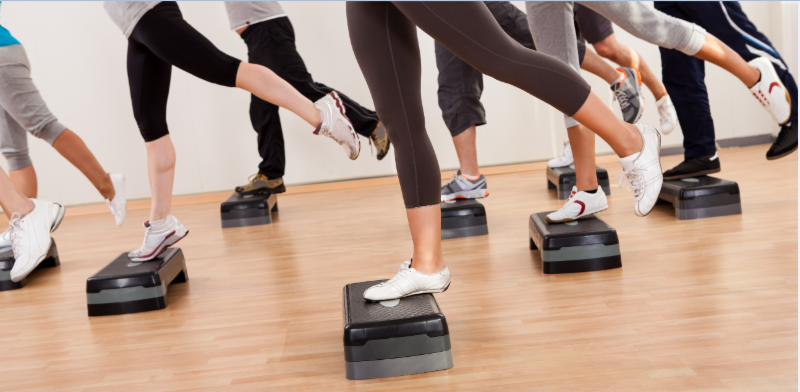
e-Newsletter - June 2015
Advancing the Prevention, Early Diagnosis, and
Treatment of Life-Threatening Blood Clots
|
The DVT/PE Life: There's No Control-Z Function or Undo
Each year, up to 900,000 people will be affected by bloods clots that form in their legs (deep vein thrombosis or DVT) and their lungs pulmonary embolism or PE). For some of these individuals, recovery from this clinical experience may be swift and largely uneventful, but for many others who might have had more extensive clots or symptoms, it can take weeks or months for them to feel well again. Some patients deal with chronic symptoms, such as leg pain and swelling, fatigue, shortness of breath and chest pain, for many years to come. The spectrum of potential recovery times, like the diversity of experiences realized by individual DVT/PE survivors, varies widely.

Most importantly, the knowledge gained from this experience -- specifically, the ability to remain vigilant to reduce blood clot risks and recognize potential blood clot symptoms -- is crucial. Equally important, living your best life as you move forward after your blood clot experience.
This month, NBCA's e-Newsletter takes a look at a number of lifestyle issues important to living a healthy life after your blood clot, particularly if you're now taking anticoagulants or blood thinning medication. We'll touch on some of the more common lifestyle issues we most frequently receive inquiries about: Nutrition and exercise, anxiety and depression, and the management of nuisance bleeding.
It's important to discuss all of these issues with your healthcare provider, and make informed choices that are best for you and your particular situation.
|
|
You Are What You Eat, and How Much You Move
Good nutrition and exercise are fundamental aspects of good health for everyone, but given the fact that obesity and a sedentary lifestyle are widely recognized as risk factors for blood clots, it's perhaps even more important for people with a history of blood clots or a clotting disorder to maintain a healthy lifestyle.

Blood clots a
re not commonly seen in societies where diets are primarily based on unr
efined plant foods, or when the intake of animal products and highly refined foods is low. The reasons for this are not exactly known, but experts agree that low-fat, high fiber diets, when combined
with regular exercise, can help improve the normal biological process, called fibrinolysis, that prevents naturally occurring blood clots from growing and causing problems, and thereby help to reduce blood clot risk.
For people who have been diagnosed with a blood clot or clotting disorder, good nutrition also requires
consistent nutrition if they are prescribed the older blood thinning medication warfarin to slow or stop the formation of dangerous clots. Some of the healthiest foods we eat -- green, leafy foods like spinach and broccoli, for example -- contain high levels of vitamin K. Vitamin K can interfere with the way older blood thinners like warfarin work, and can even lessen their effectiveness. There are no food interactions known to occur with the newer blood thinning pills.
If you're taking warfarin, experts recommend that you speak with your healthcare provider or a nutritionist about your diet, and also stress that if you eat foods rich in vitamin K consistently -- in the same amounts over time with no sudden changes -- you can enjoy the wonderful nutritional benefits they provide as part of a healthy diet.
For more information about good nutrition and blood thinning medications, including alcohol consumption and the use of herbal supplements, click here.
Exercise
People who experience a blood clot will all emerge with a different level of physical ability. Some return quickly to normal mobility and exercise routines, while others may struggle to regain their strength and their previous routines.
Experts suggest that after suffering a blood clot, people should resume routine activities slowly, or at
 a pace that they are comfortable with. There is no one right way to proceed, but experts agree that physical activity is safe after you experience a blood clot in the leg or lung. However, if you experience a lot of pain or shortness of breath, take it easy and pace yourself accordingly.
Over time, as you regain your strength and mobility, experts suggest that you can benefit from physical activity or exercise that will help you maintain a healthy weight and offset symptoms associated with post-thrombotic syndrome, but that each individual should seek guidance from their healthcare providers regarding the best exercise route to take.
|
Anxiety and Depression
Chief among the many lifestyle issues we hear people voice concerns about are the feelings of depression and anxiety they often confront after experiencing a blood clot.
For some, it's depression that goes hand-in-hand with the dramatic changes to their lifestyle. For others, it's the nagging and, at times, even debilitating anxiety and fear that they will be struck by another blood clot...and maybe even die. In either case, the feelings are real, and for many, anxiety and depression pose tremendously difficult obstacles to overcome.

R
ecently, a study out of Denmark showed that one in five young DVT/PE patients will require psychotropic drugs, such as anti-depressant or anti-anxiety medications, within five years of their diagnosis. Not surprisingly, when NBCA shared this new information on
its Facebook page, we heard from several people who said that these feelings are not age-dependent, as these fears and anxieties can and do affect DVT/PE survivors of all ages.
No doubt, a healthy diet and exercise regimen can contribute to a person's mental health, but, for many individuals, these issues will be among the greatest challenges they face after experiencing a blood clot. NBCA turns to its good friend, PE Survivor, and also Blood Clot Recovery Network blogger Sara Wyen for some very important insights, as she recently posted a moving and informative blog about the topic here:
Dealing With Depression.
You should never suffer in silence or feel like you are alone. You are not alone. There are many others who share these same feelings. Always reach out and get the help you need. Speak to your healthcare provider if you are struggling with anxiety, depression, or any other troubling emotions in the aftermath of your blood clot experience. There are different ways these issues can be successfully managed and your doctor should be able to recommend strategies or resources that can help you.
|
|
|
Each
 year, about two to three million people in the United States will need to take a blood thinning medication.
Blood thinning medications do save lives, because they can treat or prevent dangerous blood clots, but they also pose one possible and very serious side effect: Bleeding.
year, about two to three million people in the United States will need to take a blood thinning medication.
Blood thinning medications do save lives, because they can treat or prevent dangerous blood clots, but they also pose one possible and very serious side effect: Bleeding.
Since blood thinners slow the clotting of blood, unwanted and sometimes dangerous bleeding can occur with the use of these medications. If you use blood thinning medication, you should tell your doctor about any bleeding or unusual bruising you might experience, as well as any serious falls or hard bumps to the head you might suffer. While it is
infrequent, bleeding caused by blood thinners can be very serious or life-threatening, like bleeding into the brain or stomach. Serious or life-threatening bleeding requires immediate medical attention.
Most of the time, however, bleeding caused by blood thinners is not serious or life-threatening. For example, bleeding after a skin tear from yard work. Bleeding like this is less serious, but can still be troublesome and inconvenient, and it can seriously impact the quality of a person's day-to-day life. In fact, more than half of emergency room visits by people who take blood thinners are for nosebleeds and other types of nuisance bleeding caused by superficial wounds to the skin.
With a few added precautions, people who take blood thinners can still engage in most of the activities they enjoy.
- Be cautious about activities, such as high-risk sports, that may result in injury, and always wear proper safety gear, for example, a bike helmet when cycling
- Wear protective gloves when working with tools, such as gardening shears or other sharp instruments
- Be careful when trimming hair or nails
- Use a soft toothbrush
- Wear shoes to avoid cuts on feet
Regardless of how cautious you might be, accidents can still happen, and nuisance bleeding may still occur. When it does, doctors recommend that you apply pressure with a clean bandage or cloth to stop the bleeding. If nuisance bleeding continues, there are several products, including special bandages, wound dressing, and gels and powders that can help stop nuisance bleeding more quickly. These products are available at most local pharmacies and online. They may be used safely while taking blood thinners, and they don't require a prescription. Talk to your doctor about options for managing nuisance bleeding if it's something that's causing you problems or concern.
|
Community Connection

Miami Marlins Host Social Media Night Supporting Blood Clot Awareness
Tuesday, August 4th vs. New York Mets - 7:10 PM
J
oin us for an evening to combine your passion for the Marlins, social media, and blood clot awareness in a fun-filled baseball game, when the Miami Marlins host the New York Mets! Lots of surprises in store. Thank you to Charles Sano, a young, athletic PE survivor, NBCA volunteer and the Miami Marlins Director of Groups & Special Events for bringing this wonderful opportunity to NBCA. Buy your tickets
here
and do your part in raising awareness. For more information, email [email protected].
Special Thanks to the Koziura Family and ABWA Volunteers
We extend special thanks to several volunteers
who recently staged two wonderful events to benefit NBCA.
First off, our sincerest thanks to the Koziura family for hosting the
2nd Annual For a Probable Koz Golf Tournament
in memory of Rob Koziura, who passed away at the age of 31 due to a PE. We appreciate the ongoing support of the Koziura family and their active participation in our upcoming Miami Marlins Social Media Night. And, our gratitude to the many volunteers and our new sponsor, Lazard, for their support of the
6th Annual ABWA Walk for Blood Clot Awareness
.
T
his year's event honored the memory of Victor Perniola, a long-time Lazard employee. We are grateful for ABWA's unyielding dedication to NBCA, with plans for the 2016 walk already underway.

Mark Your Calendar
August is shaping up to be a busy month. Our volunteers are, once again, hard at work with these upcoming events to benefit NBCA:
August 8:
The Deveraux Hubbard ll Run, Walk, Trot to Stop Blood Clots, Peoria, IL. For details click here.
August 15:
The 5th Annual Jim Flanagan Memorial Golf Outing, Indianapolis, IN. For more information, click here.
August 28:
Join Anna's Team at the Transamerica Chicago Triathlon, Chicago, IL. Click here for more information.
|
|
ICYMI: All the News That's Fit to Link
|
NBCA Corporate Roundtable

|
|
|
|
|